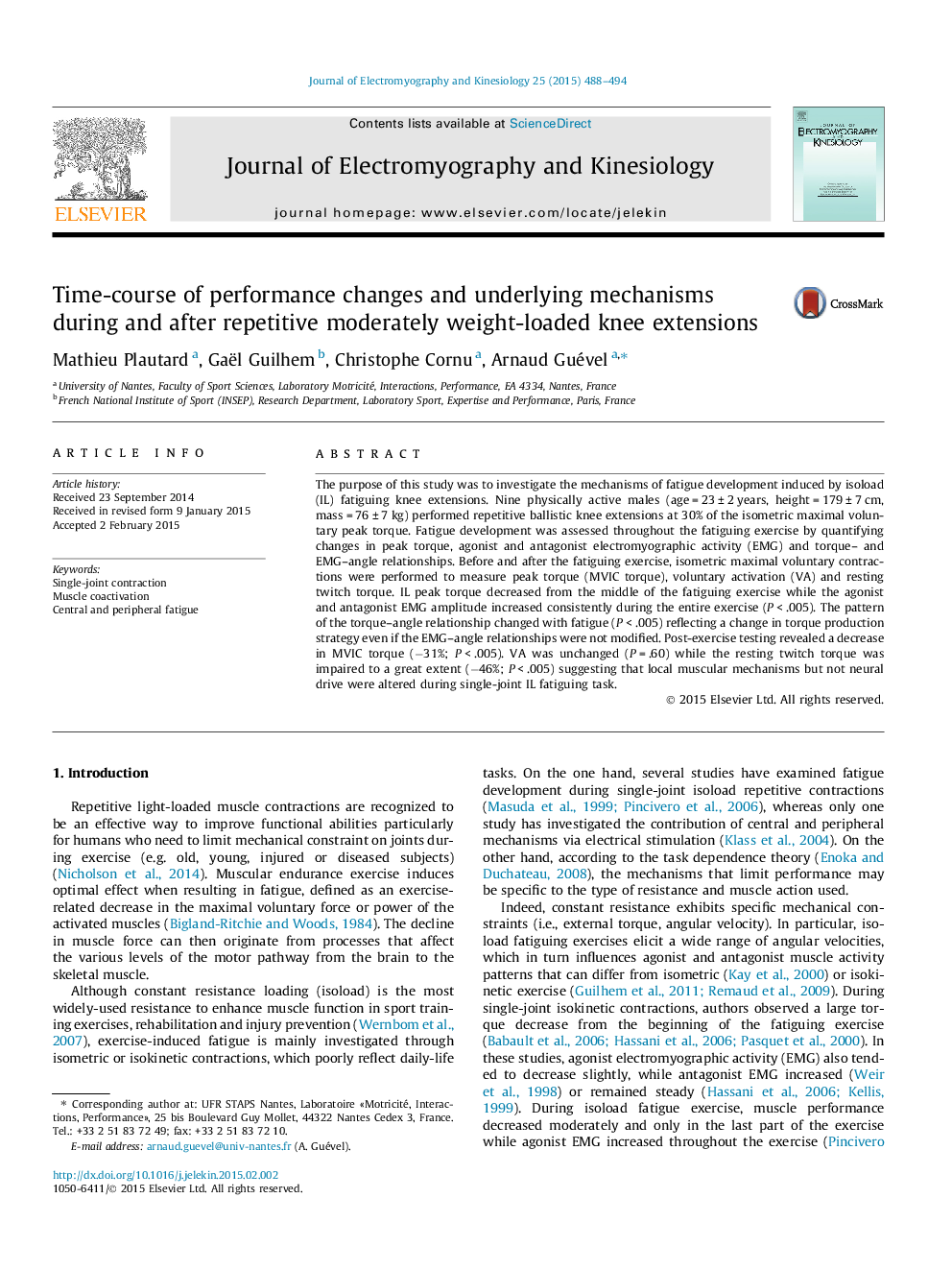| Article ID | Journal | Published Year | Pages | File Type |
|---|---|---|---|---|
| 6210295 | Journal of Electromyography and Kinesiology | 2015 | 7 Pages |
The purpose of this study was to investigate the mechanisms of fatigue development induced by isoload (IL) fatiguing knee extensions. Nine physically active males (age = 23 ± 2 years, height = 179 ± 7 cm, mass = 76 ± 7 kg) performed repetitive ballistic knee extensions at 30% of the isometric maximal voluntary peak torque. Fatigue development was assessed throughout the fatiguing exercise by quantifying changes in peak torque, agonist and antagonist electromyographic activity (EMG) and torque- and EMG-angle relationships. Before and after the fatiguing exercise, isometric maximal voluntary contractions were performed to measure peak torque (MVIC torque), voluntary activation (VA) and resting twitch torque. IL peak torque decreased from the middle of the fatiguing exercise while the agonist and antagonist EMG amplitude increased consistently during the entire exercise (P < .005). The pattern of the torque-angle relationship changed with fatigue (P < .005) reflecting a change in torque production strategy even if the EMG-angle relationships were not modified. Post-exercise testing revealed a decrease in MVIC torque (â31%; P < .005). VA was unchanged (P = .60) while the resting twitch torque was impaired to a great extent (â46%; P < .005) suggesting that local muscular mechanisms but not neural drive were altered during single-joint IL fatiguing task.
